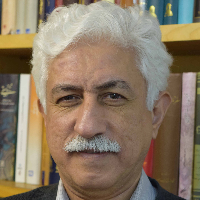Roshtkhār Monument: a Mosque or a Khaneqah?
Author(s):
Abstract:
Many of Iranian architectural works have been demolished over time. Moreover, there are some “types” of buildings that were almost completely demolished and became extinct. Khaneqah is one of these types. As stated in historic Persian and Arabic texts, before Safavid era there have many khaneqahs in Iranian cities and towns, even there have been many cities with more than one khaneqah. Safavids, who originated from the Safavid Sufi Order destroyed, deformed or at least renamed most of khaneqahs that belonged to non-Safavid or non-Shiite Sufi orders. Founding a khaneqah, which was known as an important pious and religious practice gradually declined and from tenth century AH/ sixteenth century AD onwards, khaneqah’s architecture almost faded away. Nowadays, Iranians and Iranian architectural historians have no clear image or idea about khaneqah’s formation, configuration, and architectural characteristics. Therefore they are unable to distinguish ruins of a building that someday might have been a khaneqah. Identifying the characteristics of khaneqah can be carried out using several sources, including historic texts, Islamic literature, studying the buildings that are known as khaneqah, and finally, studying the buildings that are known as hosseyniyyeh, mosque, mausoleum, or madrasa, but to the scholars their types are under debate. Roshtkhār monument is a prominent example of such buildings. On the Zaveh-Khāf road in Khorasan, there are some ruins of a building known as Roshtkhār Friday Mosque. This paper will examine the architecture of the monument on the basis of archeological findings and also recent findings about khaneqah architectural characteristics in Persian literature in early Islamic centuries. The ruins of Roshtkhār building are located in the suburb of the new Roshtkhār town; however recent archaeological excavations show that the building was someday located inside the town or on its west side. The building consists of a portal, a court with some rooms around it, an Iwan, and a domed hall. The Iwan has the domed hall on one side and the ruins of an unknown space (probably a second domed hall) on the other side. Date of the building is under debate; but on the basis of archaeological findings and comparing the scholars’ dating, we will show that the construction of the building dates back to eleventh century AD, with an important restoration including a dated thuluth inscription in fifteenth century AD. The building used to be called as khaneqah before it was registered in the Iran’s National Registry of Architectural Heritage in 1976; however, its type has been under debate. None of the scholars have clarified their criteria used to identify the type of this building. Therefore, we should take another way to identify its type: deliberating the building compatibility with khaneqahs’ physical configuration and functional requirements. In this paper we examine the type of this building on the basis of the criteria that we achieved in another research about khaneqah architecture and will show that the building almost completely corresponds to khaneqah architectural characteristics. So it is a khaneqah rather than a Friday mosque.
Keywords:
Language:
Persian
Published:
Journal of Architecture and Urban Planning, Volume:7 Issue: 13, 2014
Page:
57
magiran.com/p1315064
دانلود و مطالعه متن این مقاله با یکی از روشهای زیر امکان پذیر است:
اشتراک شخصی
با عضویت و پرداخت آنلاین حق اشتراک یکساله به مبلغ 1,390,000ريال میتوانید 70 عنوان مطلب دانلود کنید!
اشتراک سازمانی
به کتابخانه دانشگاه یا محل کار خود پیشنهاد کنید تا اشتراک سازمانی این پایگاه را برای دسترسی نامحدود همه کاربران به متن مطالب تهیه نمایند!
توجه!
- حق عضویت دریافتی صرف حمایت از نشریات عضو و نگهداری، تکمیل و توسعه مگیران میشود.
- پرداخت حق اشتراک و دانلود مقالات اجازه بازنشر آن در سایر رسانههای چاپی و دیجیتال را به کاربر نمیدهد.
In order to view content subscription is required
Personal subscription
Subscribe magiran.com for 70 € euros via PayPal and download 70 articles during a year.
Organization subscription
Please contact us to subscribe your university or library for unlimited access!



